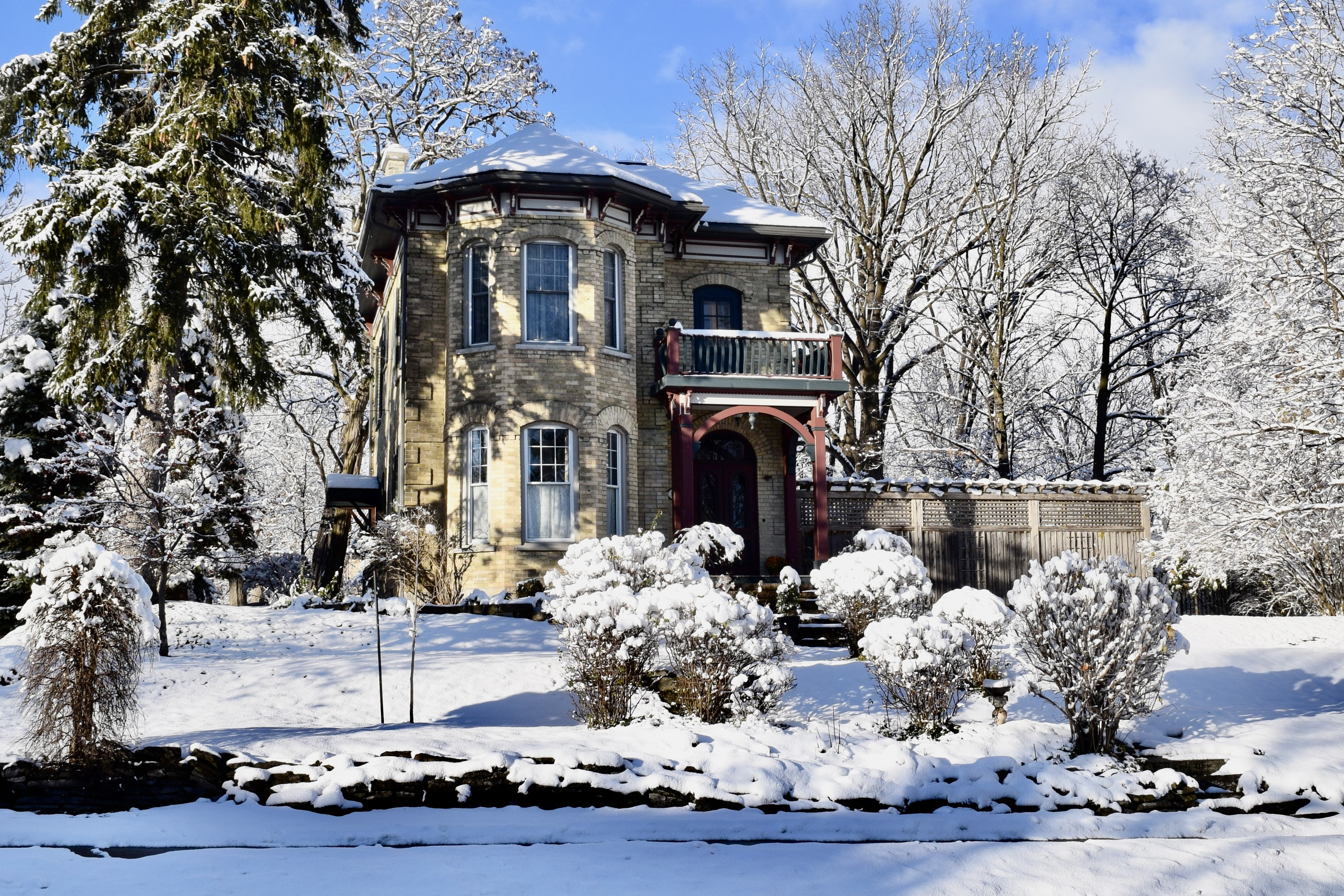It’s really a no-brainer.
The government, without consultation and an understanding of its practical impacts, imposed an arbitrary, very tight deadline for Ontario municipalities to review their municipal heritage registers — and decide whether their listed (non-designated) properties should be designated, failing which they would be kicked off the register and lose all protection. Scores of municipalities across Ontario have been scrambling, working hard to meet the deadline: January 1, 2025, now less than 11 months away. Almost all could use more time to comply.
The government could easily accommodate them.

165 Queen Street West, St. Marys: one of 110 St. Marys properties listed with owner support that will not be listed/protected by January 1, 2025 Photo: Dan Schneider
Yes, we’re talking about the fallout from Bill 23. AKA the More Homes, Built Faster Act, 2022, Bill 23 made significant amendments to the Ontario Heritage Act. [1] Most of the OHA changes came into force on January 1, 2023.
One of the more controversial changes affects listed or non-designated properties on municipal heritage registers: all properties listed as of January 1, 2023 will lose their listing status and protection after two years — January 1, 2025 — unless they are designated or otherwise protected. Properties that lose listing status cannot be re-listed for another five years.
It’s no secret that Bill 23, an omnibus bill affecting a whole slew of statutes, was a “rush job.” In late 2022 the policy work (such as it was), drafting of the bill and its consideration by the Legislature were all hustled through in near-record time. There was no chance to consult with municipalities and the heritage sector on the changes to the OHA and consider their on-the-ground implications.
For the drastic changes to listing, one fact jumps out: Neither the Ministry of Citizenship and Multiculturalism (MCM), which is responsible for the OHA, nor anyone else, had a clue how many properties had been listed in the province since listing began in 2005. Nor how many municipalities had listed properties on their registers.
Subsequent to Bill 23’s passage, with the assistance of municipalities themselves and thanks to an initiative by the City of Toronto, MCM cobbled together a figure of some 36,000 properties — in over 100 municipalities, big and small. In Toronto, for example, there are approximately 4000 listed properties; in small-town St. Marys there are 112.
All of those properties will lose what limited protection they have next January 1st. Unless they are designated (or protected by other means) before then. [2]
Affected municipalities all face the same daunting challenge — how to review their municipal registers, prioritize properties for designation (or other protection) and then move those properties into the exacting designation stream before the time runs out. For most this is an enormous, near-impossible task. With less than 11 months to go, some cities and towns, wanting to comply but anxious to get it right, are still at the review and prioritization/planning stage. For many municipalities the actual designation stage — which involves, depending on the property, a huge amount of work (research, analysis, report-writing, consultation with property owners, municipal heritage committee review, council decision, public notice, etc.) — has only just begun.
Consider: Historically almost all Ontario municipalities with heritage designation programs have individually designated only a handful, or fewer, properties a year.
Compounding the problem is that the province has made designation more difficult by imposing new hurdles in the designation process, especially the requirement that a property must meet two of the legislated criteria for designation instead of one.
The potential time and cost implications here are so great that most municipalities are resigned to protecting only a small fraction of their listed properties. Of St. Marys’ 112 listed properties — all listed without owner objection! — only 2 or 3 will be designated by December 31.
Not surprisingly, this alarming predicament — verging on crisis in many places — is catching media attention. “Heritage buildings face an uncertain future in Ontario” (Toronto Sun); “City rushes to grant heritage status to 'most critical' buildings: Thousands of properties are set to disappear from registry at end of the year” (CBC Ottawa). “City of Toronto scrambling to save mansion as deadline looms to designate it a heritage site” (CBC Toronto) [3]
Is the government listening?
The two-year expiry deadline was arbitrary. It was not informed by an understanding of the magnitude of the effort that would be required to comply with the new requirements.
Extending the deadline for three-five years would give Ontario municipalities more time to plan, resource and implement a complex undertaking. It would help ensure that heritage properties are not ‘“thrown off the list” prematurely and without input from property owners.
A simple change to the OHA would do the trick. It would cost the government nothing. And save them from ever more bad PR as the clock runs down.
Notes
Note 1: OHA+M has published a number of articles related to Bill 23 and the changes to listing. See in particular “Government slams multicultural heritage in flagrant attack on heritage protections” and “Bill 23: This Game of Chicken Will Have a Bad Ending.”
Note 2: Listing provides only short-term protection from demolition: The owner of a listed property must give the municipality 60 days written notice of plans to demolish a building or structure on the property.
Listing of non-designated property was introduced in 2005. Its purpose is to provide an official, public process designed to flag heritage properties to property owners and the public and within the municipal administration. It is not a “heritage limbo” — while used in a variety of ways by municipalities, it is primarily a planning tool used to inform a whole range of public and private decisions, not just decisions on designation.
Note 3: Media coverage of the issue continues to grow. Examples:
- https://torontosun.com/news/provincial/heritage-buildings-face-an-uncertain-future-in-ontario
- https://www.cbc.ca/news/canada/ottawa/ottawa-heritage-building-rules-ontario-housing-1.7085560
- https://www.cbc.ca/news/canada/toronto/historic-toronto-mansion-heritage-deadline-1.6680560
- https://www.cbc.ca/news/canada/london/provincial-deadline-means-these-london-properties-could-be-dropped-from-heritage-list-1.7088982